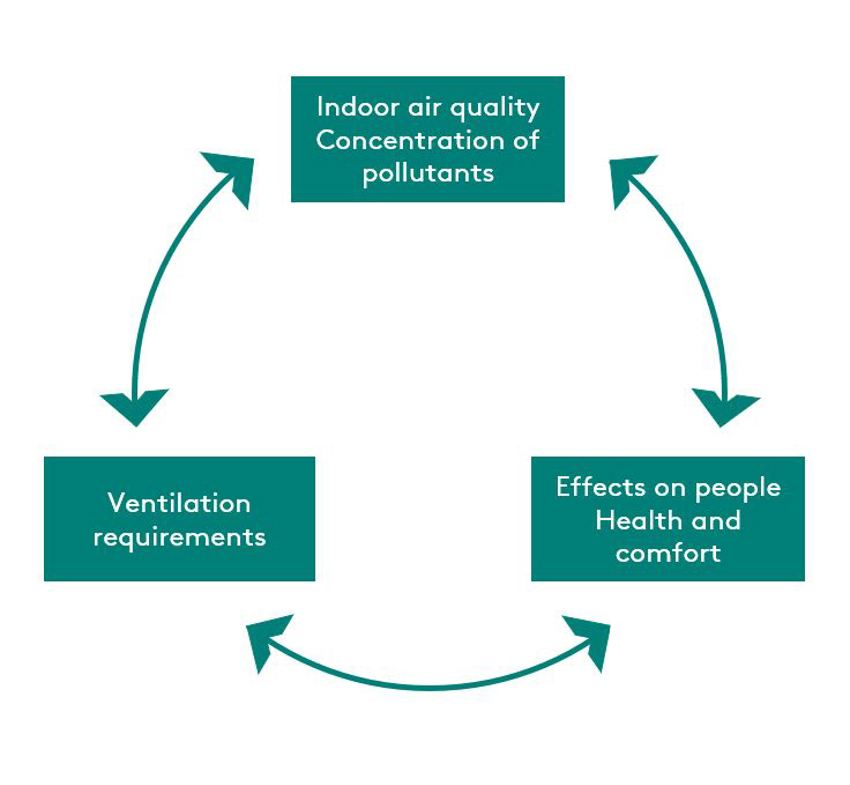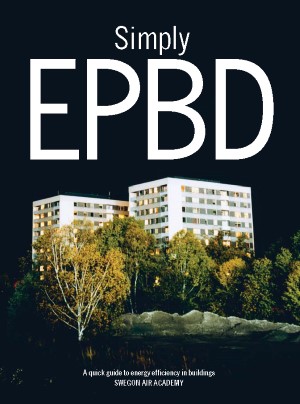Building standards in ventilation
A code is a law or regulation that sets forth minimum requirements for designing and constructing buildings and structures. These minimum requirements, established to protect the health and safety of people, attempt to represent society's compromise between optimum safety and economic feasibility.
What it is? Building standards or building codes?
All sets of rules specify the standards for constructed objects as buildings — regulating their design, construction, maintenance, and/or operation.
Building standards
In the common lexicon of codes and standards development, and especially in the various international arenas, the term a building standard is most commonly used to characterise all the various types of standardising documents (i.e., codes and guidelines, building standards, guides, certifications, policies and construction regulations).
Building codes
A building code (also known as building control or building regulations) is a set of rules that specify the standards for constructed objects such as buildings and non-building structures.
Building codes are generally intended to be applied by architects, engineers, interior designers, constructors and regulators. Still, they are also used for various purposes by environmental scientists, real estate developers, manufacturers of building products and materials, facility managers, tenants, and others.

Role of standards in the built environment
Although building codes provide much focus, a variety of other related codes also readily serve the built environment.
In particular, the building standards with regards to ventilation describe various criteria for levels (i.e. indoor environment and comfort), for design (i.e. buildings, materials and systems) and performance (i.e. energy, environment).
Also, the purpose of the standard is to ensure that ventilation systems are designed, installed, and can be operated and maintained technically, hygienically, and functionally sound, e.g. considering comfort and energy efficiency.

Requirements in building codes
Building codes typically contain two types of requirements — prescriptive and performance-based. However, a third type of requirement is gaining traction — outcome-based.
Prescriptive requirements provide minimum standards for building materials, products, systems, etc. In a way, they stipulate specifically what to provide and often represent a checklist of items and the minimum acceptable specifications for those items.
In contrast, performance-based requirements set a desired end state and do not provide minimum characteristics per se — they set the desired result without specifying how to achieve that result. In most instances, a measure of achieving the desired result is based on the anticipated results associated with following the prescriptive requirements.
Gaining attention is the outcome-based requirements, where the performance outcome is established, it is not aligned with any particular prescriptive provisions and compliance is verified after rather than before occupancy.
Reduce energy and preserve indoor environment in buildings
Building codes are important for reducing energy use and preserving indoor air quality. In general, the primary ways of conserving energy and preserving air quality in buildings involves:
Efficiency — improving the energy efficiency of equipment and appliances and optimising their use.
Energy — improving the thermal performance of the building envelope and reducing air change rates to minimize the energy used to condition the indoor air.
People — and thus providing adequate indoor air quality and supplying sufficient outdoor air to dilute indoor-generated contaminants.

Standards development and future issues
Despite the slow process of the codes and standards development, building codes have prompted and expanded focus on several issues, for example, the enlarged focus on sustainable and healthy buildings leading to the development of new standards focused on achieving more than minimum requirements.
As the building industry moves from achieving design criteria to measuring and verifying actual performance, codes and standards focus on commissioning, operations, maintenance, activities and occupancy.
Outcome-based codes have been identified as a potential new methodology for achieving specific performance levels. Outcome-based codes establish a target level and provide for regular measurement and reporting to assure that the completed building performs at the established level, especially addressing post-occupancy compliance.
Future challenges
The building design is climate dependent
As climate conditions change, existing housing built to a previous standard may experience serious indoor air problems because either the building envelope or provisions for ventilation, or both, may prove inadequate.
Thus, adapting to continuous change may require a new and more 'forward-looking' framework and investment in increased envelope protection and greater adaptability of systems (e.g. balanced ventilation systems tend to be more adaptable but also cost more).
Focus on balancing energy and indoor air quality
In many codes, the focus is to minimise energy use under the constraints of providing 'minimally acceptable' indoor air. In other words, indoor air quality is being squeezed to its 'minimally acceptable level' while energy conservation has become the objective to maximise.
So, there is a much greater probability for poor indoor air quality if building code enforcement leans too heavily on the side of energy conservation and, thus endangering the building occupants.
It takes several years to implement the new codes
There is a time delay between when a code is issued and when states and communities implement and update their codes. Therefore, the risk is that the issues and solutions are no longer applicable.
Indoor air and health problems are becoming more vulnerable during this adjustment period than they have been in the past. Thus, as building envelopes tighten, ventilation requirements may have to play catch up, and homes in the interim will likely be under-ventilated.
Lack of an educated public
The indoor climate is more satisfying to occupants when they can control it, which is why 'occupant control' is essential. However, the general public is not very knowledgeable about their role in protecting the indoor air quality in buildings.
The significant role plays in the public's perception of ventilation, and vital public education is needed to educate about better insulation, tighter windows and proper mechanical ventilation usage — thus leading to education about energy conservation and the need for good indoor air.
Building standards throughout the world
Standards are the distilled wisdom of people with expertise in their subject matter, for instance — quality, environment, health & safety, energy, food and IT security, etc. Here is the list of a few organisations dealing with standards throughout the world — with a focus on ventilation and indoor environment in buildings:
EN standards in Europe (www.en-standard.eu)
ASHRAE Standards, mainly in the USA (www.ashrae.org)
Note that these are just examples, and we recommend a broader search.
Download Simply EPBD by Swegon Air Academy
When it comes to property owners who require energy certificates for their buildings, it is natural to ask what will happen if they do not complete the stipulated inspections and assessments within the time limits. This and other issues are discussed in the book.
The book will open in a new window, and you can start reading immediately.
Download the book Simply EPBD

Find out more from external experts
Why We Ventilate Our Houses: An Historical Look
Nance E. Matson and Max H. Sherman
Lawrence Berkeley National Laboratory, 2004
The main objective of building standards is to attain minimum standards of safety and general welfare and health of the inhabitants of a building.Anonymous